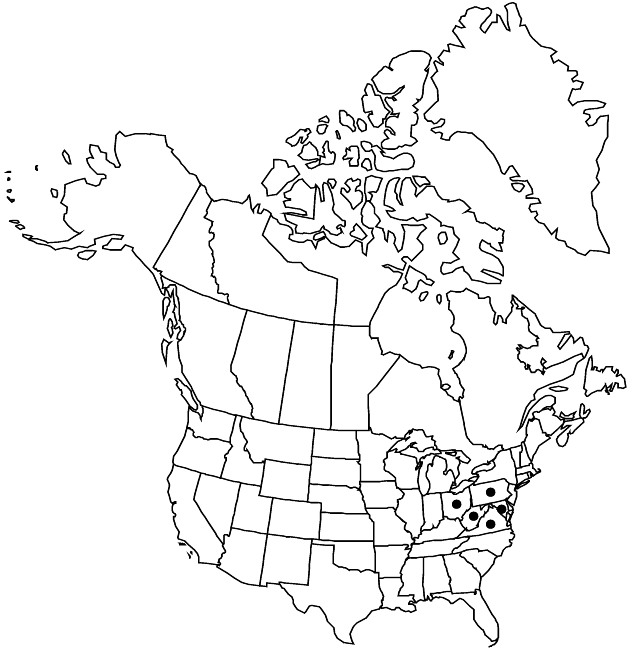Antennaria virginica
Rhodora 37: 230, figs. 1, 2. 1935.
Dioecious. Plants 4–25 cm. Stolons 2–8 cm. Basal leaves 1-nerved, spatulate to cuneate-oblanceolate, 10–25 × 3–9 mm, tips mucronate, faces greenish gray, moderately pubescent. Cauline leaves linear, 4–20 mm, not flagged (apices acute). Heads 3–6 (–9) in corymbiform arrays. Involucres: staminate 3.8–6 mm; pistillate 5–7 mm. Phyllaries distally white or stramineous. Corollas: staminate 2.2–3.5 mm; pistillate 2.8–4.5 mm. Cypselae 0.8–1.3 mm, slightly papillate; pappi: staminate 2.8–4 (–5) mm; pistillate 3.5–5.2 mm. 2n = 28, 56.
Phenology: Flowering early–mid spring.
Habitat: Devonian shale barrens and argillaceous soils derived from them, open deciduous woods and fields
Elevation: 300–600 m
Distribution

Md., Ohio, Pa., Va., W.Va.
Discussion
G. L. Stebbins (1936) and R. J. Bayer and Stebbins (1982) maintained that Antennaria virginica is a distinct species. After previously recognizing the taxon as a variety of A. neglecta, A. Cronquist (1945; H. A. Gleason and Cronquist 1991) agreed. It is a sexual progenitor of the A. howellii complex and is most closely related to A. howellii subsp. neodioica (Bayer 1985). Antennaria virginica is dioecious and is characterized by its relatively small, spatulate, basal leaves and subulate-tipped cauline leaves, which separate it from A. neglecta and the gynoecious A. howellii complex (Stebbins 1935; Bayer and Stebbins).
Selected References
None.